In Good Taste #51: Vine Leaves and Horta
A couple of Greek-inspired summer dishes; a fox in the garden; and a book by my favourite cartoonist
Well, hello there! How are you?
Good I hope. Thank you so much for being here.
(Not up for the chitchat? Completely get it. Click the email title to go to a web-based version then jump straight to the recipe or Cultural Fun.)
Today got off to an exciting start when when this young fox strolled into the garden whilst I was having my morning coffee.
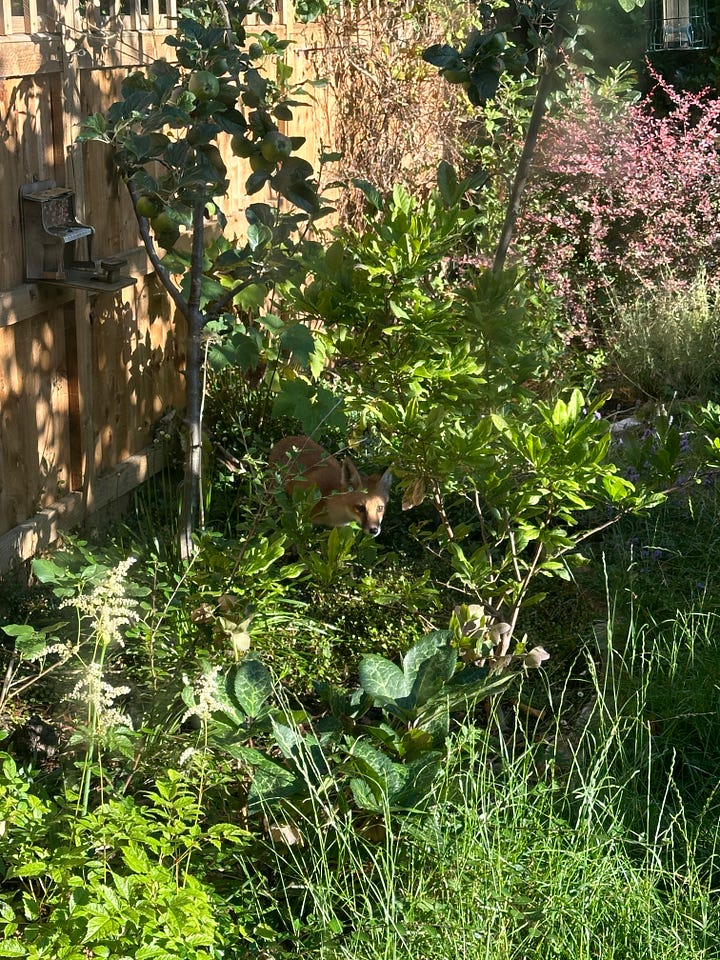

Then I went for my first run in ages and cycled to Golders Green to deliver some ready meals. My democratic rights got exercised along the way too. All the endorphins have made me feel pretty jolly but I’m concerned I’ve overdone it and will be asleep before the exit polls. I’m just about to set off to a friends party with people planning to stay up all night. Oof. Time for a little democracy nap perhaps?
In other news, my second field-to-ferment workshop in Oxfordshire was on Friday and went beautifully. Another set of happy fermenters picked vegetables from the market garden run by Worthy Earth and turned them into beautiful krauts, kimchis and pickles.
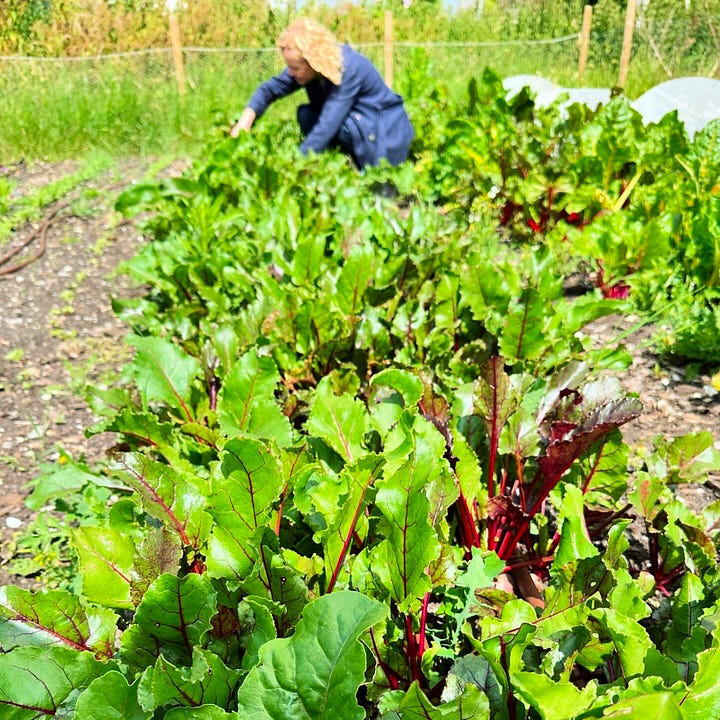

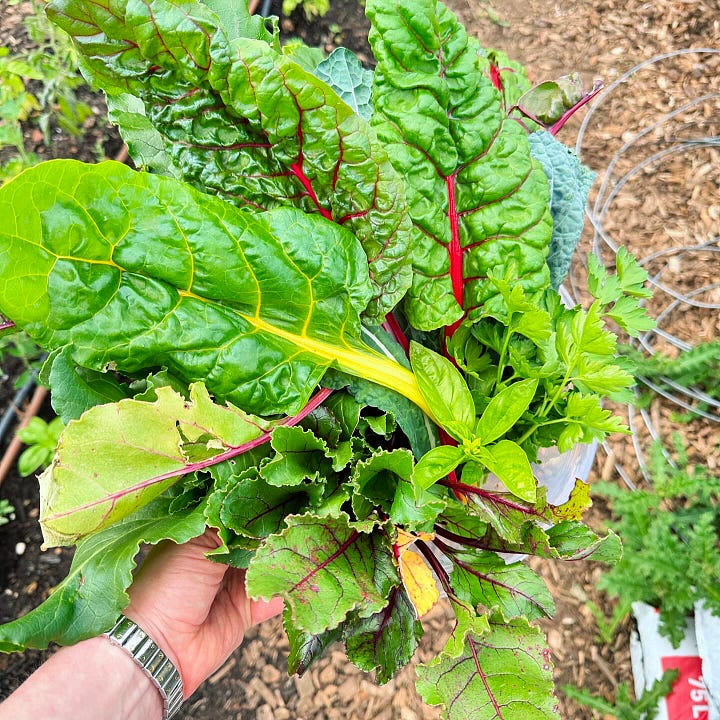
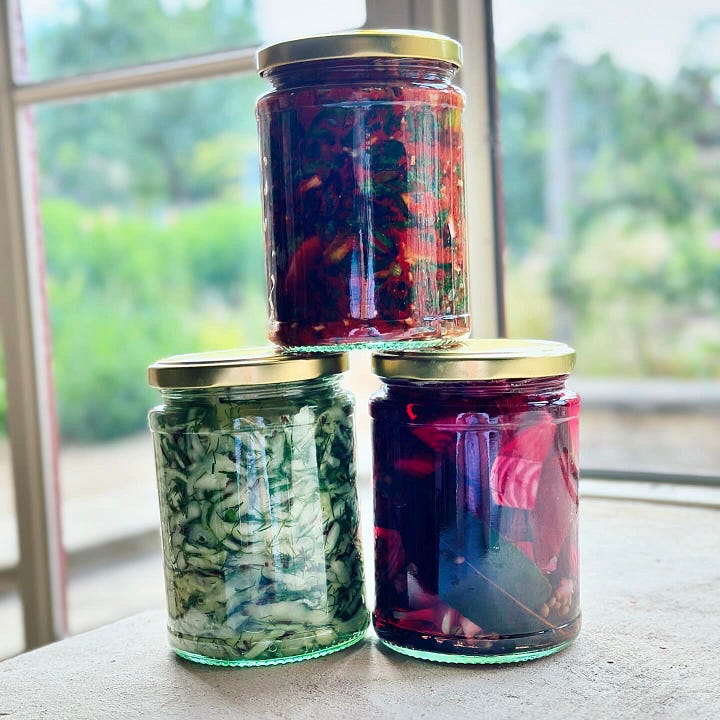
I’ll be running at least a couple more before the end of growing season. So make sure you’re subscribed to be the first to know when new dates go on sale and get an In Good Taste early bird discount.
Then yesterday was Lunch Club at Hornsey Vale Community Centre. Less bucolic than Oxfordshire but always fun. My impression is that most of the attendees are meat-and-two-veg people. Or at least the most enthusiastic responses I get are always the months when I dish up a pie, a stew with dumplings or similarly hearty, traditional British fare. But I’d been asked to plan July’s event around some food donations received by the centre, which included rice, lentils, coconut milk and tinned peas. Some sort of dal seemed inevitable…
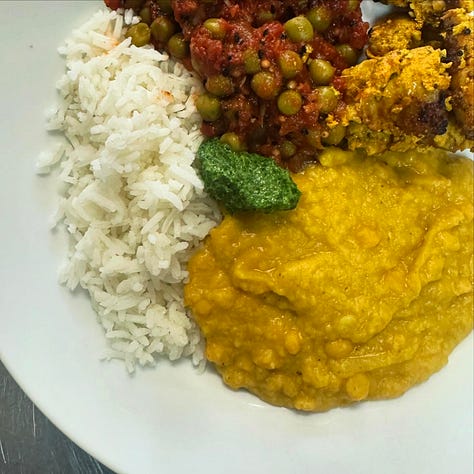
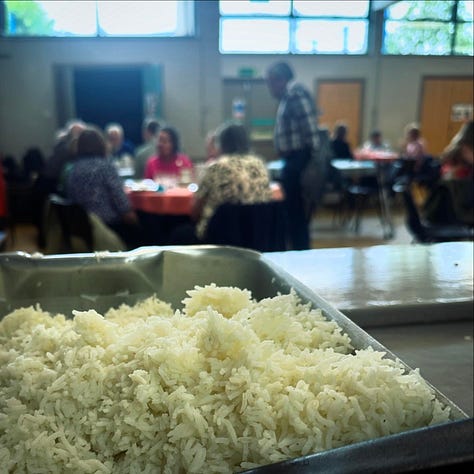
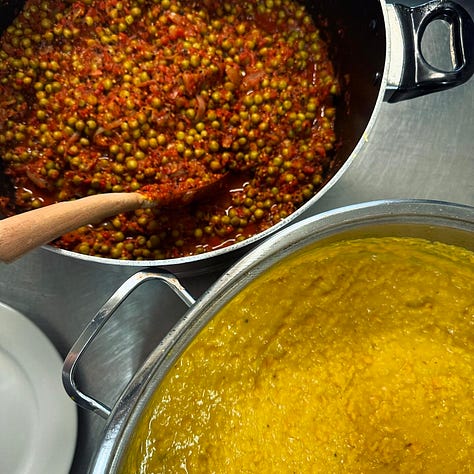
I made a red lentil and chana dal with coconut milk and a tomatoey curry with peas. Plus rice and chicken or paneer tikka. Nothing had chillies in but I did a fiery coriander and green chilli chutney on the side as there’s always a contingent who asks for hot sauce. Plus some raita as I know a lot of lunch clubbers are completely spice averse. I was a bit worried about how it would go down but everyone seemed happy. Phew…
And last but not least, my final supper club of the season will be at Lizzy’s on the Green on July 20th. I’m very excited about the menu and hugely looking forward to cooking the following things:
Welcome Drink
Elderflower Champagne & Fig Leaf Kombucha Cocktail
Snacks
Cheese & hazelnut choux bites, carrot & cumin purée
Kimchi devilled eggs
Preserved Lemon & Saffron Dolmades
Freshly baked focaccia
Sharing Plates
Slow roast lamb/roast mushrooms (V) with fava bean pureé
Smoked aubergine & ricotta ravioli with lacto-tomato butter
Braised leeks with green romesco
Charred summer greens, peach & mozzarella salad
Dessert
Apricot noyaux ice cream pavlova


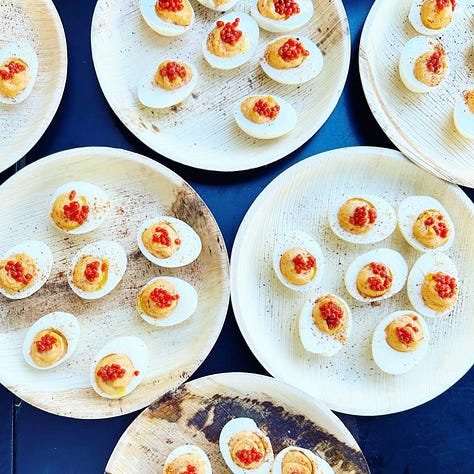
It will be absolutely lovely. Do please come along!
Recipe: Horta (English Summer Verson)
I picked my Growing Communities veg bag up on my run this morning. As well as a bunch of leafy carrots (shown here obscuring my sweaty face) there was some rainbow chard. My first thought was to make kimchi but then I saw the three courgettes. One was regular-sized by the other two were fairly baby-ish and made me think of the perfect horta I ate at a restaurant called Veranda in Corfu.
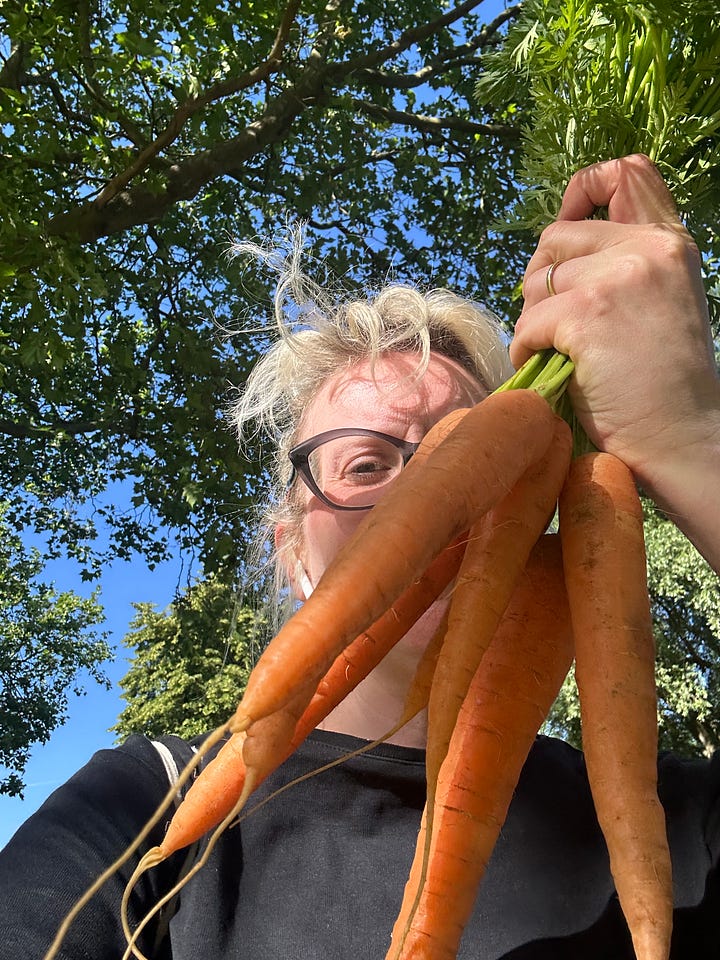
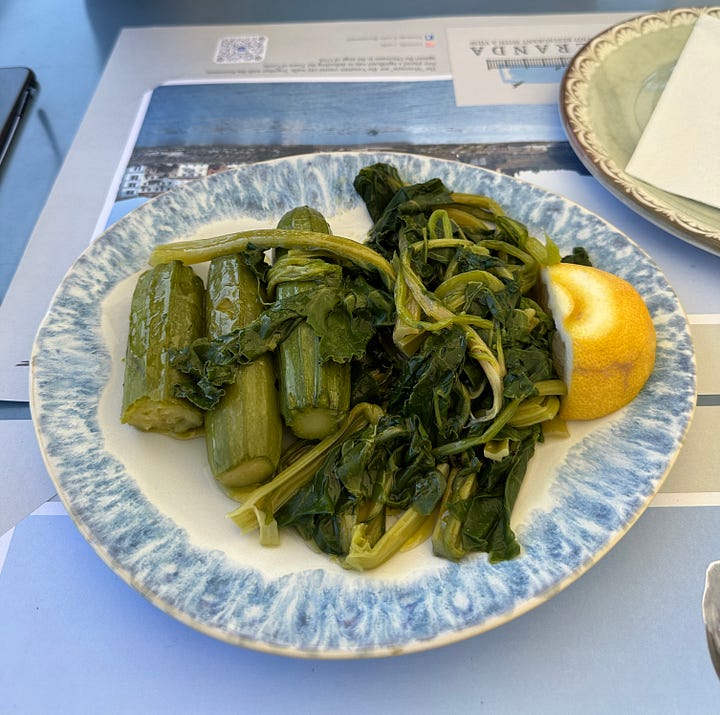
In Greece horta is the catch-all term for leafy greens, often containing some mix of dandelions, chicory and amaranth. They’re usually served boiled and dressed simply with olive oil and lemon. Those specific mountain greens are hard to come by here but we’ve got plenty of leafy things in England so I thought it would be pretty good with chard and the cute little courgettes and I was right.
This is barely a recipe. Merely a suggestion for a low-effort, holiday-vibes thing to do with some nice summer greens. The quantities are what I happened to have. Scale up or down as appropriate.
Ingredients
Approx 200g rainbow chard
2 baby courgettes
salt
lemon juice
olive oil
Method
Wash the veg really well. Trim any rough ends from the stems and let them sit in a big bowl of cold water for a few minutes to get rid of any grit. Meanwhile bring a large pan of well-salted water to the boil. Lift the greens from the water (draining them through a colander just pours the grit back over…) and transfer to the boiling water.
Boil until tender. This is going to depend very much on the thickness of the stems, size of the courgettes etc. I found the littlest courgette was done in 8 minutes, tender all the way though and with a little give when squeezed but still keeping its shape. The chard took about 15 minutes and the bigger courgette nearer 20. Keep checking. You want the stems of the greens to be soft but the leaves should still be intact.
Drain the veg and dress with olive oil and lemon. Let everything cool to just above room temperature. Then season with salt and more lemon and eat.
Notes (If Ifs And Ands Were Pots And Pans…)
This will work with any tender-ish leafy greens. You want something that will get soft all the way through (so not cavolo nero with its tough stems) but keep its structure intact (so also not very delicate lettuce). Dandelion greens or something else with a little bitterness would be really good as part of the mix.
Whatever you use, keep an eye on it whilst cooking. I ate this dish twice at the same restaurant when we were in Corfu. The first time it was absolutely perfect: the greens soft but still with texture. The second time it was still good but the courgette was just a little bit flabby and the leaves beginning to disintegrate. The difference was probably a matter of a minute extra in the boiling water. Just keep an eye on things and hoik stuff out when it’s tender but still in one piece.
Use you best olive oil. I used The Governor, the Corfiot oil I bought and had confiscated by British Airways so had to buy again online. (Yes, BA, still bitter.)
Some feta would be nice crumbled over but isn’t necessary. I think less is more here.
Recipe: Fermented Vine Leaves
Where I live, just off Green Lanes in north London, there are a lot of vines. Many were planted by Greek Cypriot and Italian immigrants who came here in the sixties. I heard Anna, my elderly Italian neighbour from two doors down, giving vine maintenance tips to my immediate neighbour just the other day.
I wish I’d thought to ask her advice when I planted three in my front garden about four years ago. In my naïveté and vine-ignorance I put them way too close together. They now form a kind of hedge and send tendrils out which, if I’m not very conscientious with my secateurs, regularly threaten to block the path.
I’ll be making vinegar with the grapes but we’ll talk abut that in the autumn. Before then there are the leaves to deal with. Many, many leaves. Whenever I trim the vines I try and use the leaves since they’re so good for making pickles. Full of tannins, they help stop fermented vegetables (cucumbers, say, or tomatoes) going mushy and also bring a lovely lemony taste to proceedings. They’re also really good for creating a boundary at the top of the jar, keeping everything under the brine.
But today we’re just fermenting the leaves on their own. You can make dolmades with fresh leaves, blanching them briefly before filling and rolling. But for the ones on my supper club menu I’m fermenting the leaves first to add extra flavour. I’ll give you the recipe for the dolmades themselves after July 20th but if you have access to a vine and want to get a head start then here’s what to do. You’ll need a 750ml or similar-sized jar.
Ingredients
Approx 40 vine leaves (see note)
6 cloves garlic, peeled
1 tsp black peppercorns
4% brine
Method
Prepare the leaves. Wash the leaves really well and then sort through them making sure you are selecting good big ones (roughly hand-sized) with no holes. Snip off the stems and lay them in piles of ten.
Put the garlic and peppercorns in a the bottom of your jar then roll each pile of leaves into a fat cigar shape. Add them to the jar, each cigar standing vertically.
Pour over the brine and top with another few leaves to make sure everything stays below the surface.
Leave, burping 0ccasionally, for 1-2 weeks. The leaves will turn from bright to olive green and before umami and lemony tasting.
Notes (If Ifs And Ands Were Pots And Pans…)
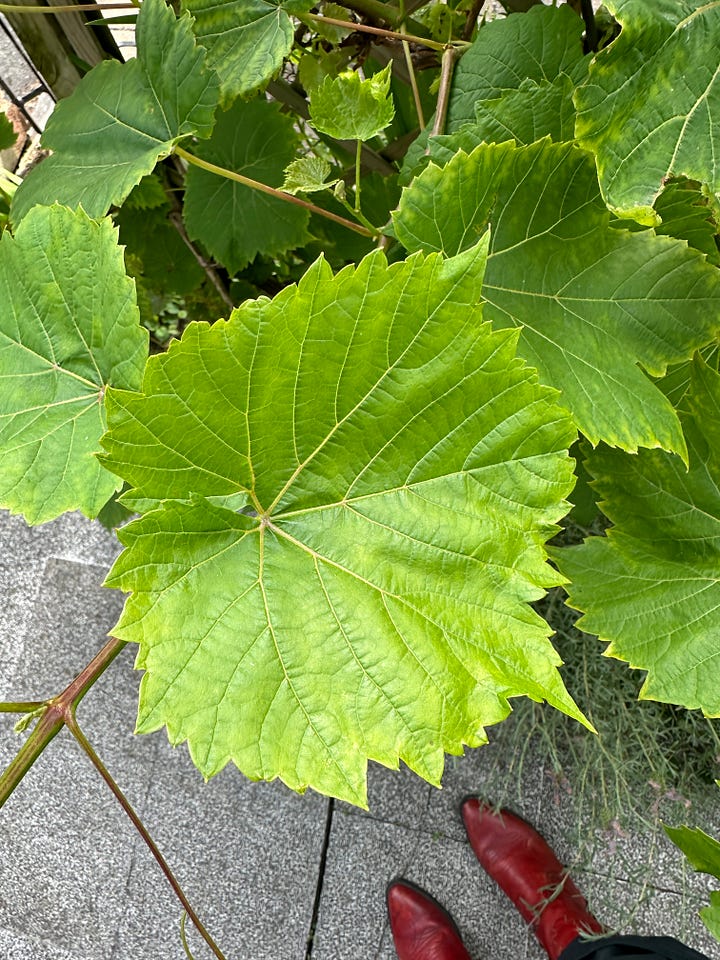

Try and use leaves with a good big middle section. Of my three vines, only one lends itself really well to dolmades. The lobes of the others are too deeply divided. All the filling falls out.
If you think life is too short to stuff a vine leaf the leaves are still worth pickling. They have plenty of umami, citrusy flavour and are great shredded into salads or stews.
Cultural Fun
My favourite New Yorker cartoonist, Asher Perlman, has a book out. This is one of my favourite toons from Well, This Is Me.
Bye! See you next week!
In the meantime, if you felt like sharing In Good Taste with friends or family who might enjoy it, you can do so with the button below. Or upgrade to paid to support the work I do. Either would mean a lot to me. Thanks so much.
In Good Taste is a Sycamore Smyth newsletter by me, Clare Heal.
You can also find me on Instagram or visit my website to find information about my catering work, cookery lessons and upcoming events.


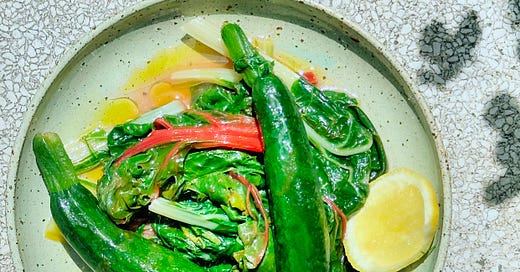




We have loads of vines in our garden and, although we make wine with the grapes, I'm ashamed to say I never do anything with the leaves. This post might just change that! Also, yay for horta.
I grew up in Greece with chorta. It took me a long time to translate this dish to cooking in the UK but I now merrily pick nettles and dandelion leaves for a British-Isles version. Beetroot greens also make a great chorta version.